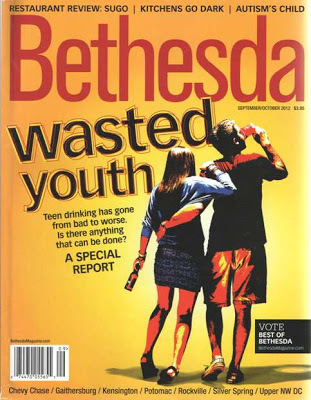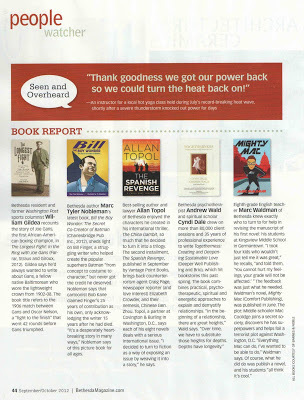Marc Tyler Nobleman's Blog, page 116
January 14, 2013
Baby of Steel
I’m going on faith that this was a moment of bonding, not a desperate, 3 a.m. attempt to bore a fussy baby back to sleep.
 Arvi and Zoe; photo courtesy of my friend (and the mommy) Alyce Bybee
Arvi and Zoe; photo courtesy of my friend (and the mommy) Alyce Bybee
 Arvi and Zoe; photo courtesy of my friend (and the mommy) Alyce Bybee
Arvi and Zoe; photo courtesy of my friend (and the mommy) Alyce Bybee
Published on January 14, 2013 04:00
January 13, 2013
TED 2013: 7 out of 31 from New York
In 2012, TED conducted a global talent search in 14 cities. I was honored to be one of the speakers at the NYC stop.
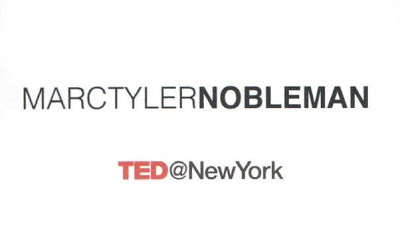
I don’t know how many people total participated in the talent search, but 34 of them have been asked to speak at TED 2013. Of the 31 impressive people/groups from my night, seven have been asked to speak at TED 2013. Those seven are 21% of all chosen via the talent search, 23% of my night, and more than were chosen from any other city.
Congrats to all—especially my friend and fellow mystery-hunter Joshua Prager.
the NYC lineupthe TED 2013 lineupthe speakers discovered through the talent searchthe speakers chosen from the NYC night:
Congrats to all. Wish I could come hear you again.

I don’t know how many people total participated in the talent search, but 34 of them have been asked to speak at TED 2013. Of the 31 impressive people/groups from my night, seven have been asked to speak at TED 2013. Those seven are 21% of all chosen via the talent search, 23% of my night, and more than were chosen from any other city.
Congrats to all—especially my friend and fellow mystery-hunter Joshua Prager.
the NYC lineupthe TED 2013 lineupthe speakers discovered through the talent searchthe speakers chosen from the NYC night:
Joshua will open up about the bus accident that caused him serious injury.
Jack Andraka will describe a promising pancreatic cancer test...that he created. Oh, he’s a teenager.
John McWhorter will argue that that texting is a language with value like any other.
Phil Hansen will talk about his unusual art process.
Orly Wahba will reflect on the power of kindness.
The Sleepy Man Banjo Boys will bedazzle by bluegrass chops.
Daniel Ogilvie is a philosopher.
Congrats to all. Wish I could come hear you again.
Published on January 13, 2013 04:00
January 12, 2013
Sea World: The Sequel
On 10/5/12, I went to 1977.
Actually, I went to Florida. But I went because of 1977.
I went to meet people who, in 1977, were water skiers in the groundbreaking superhero show at Sea World in Orlando (and Ohio).
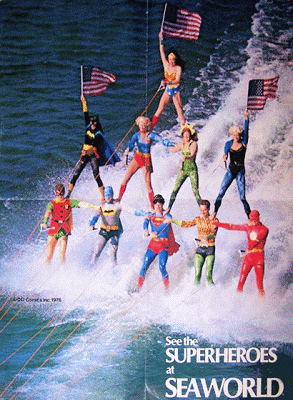
And whom, in 2010 and 2011, I tracked down. After interviewing more than 40 of them, I posted an oral history of what some call the most accomplished water skiing show ever mounted.
During the ski show, most of them were teenagers or in their early twenties. Their recollections were entertaining and often moving, frequently unique (how many people you know got paid to water ski?) yet familiar to anyone who has had a summer job or a summer crush. Many had not stayed in touch with anyone else from the show, and through my series, some found themselves reconnecting. It wasn’t a surprise to me when talk of a reunion surfaced.
Thanks to the initiative and considerable efforts of former superheroine Betsy Maher and those she recruited, a reunion did indeed come into being, just over a year after the final entry in my series went live. The superhero show closed in 1979, making this the 33-year reunion…and making Betsy a superheroine still. As we all know, reunions are a lot of work to organize.
I was honored to be invited but hesitant to go. After all, I wasn’t in the show. I haven’t water skied since the mid-1980s, and when I did then, it wasn’t performance caliber. (In other words, I could barely keep upright.)
But I developed friendships from afar with these people, and some of them encouraged me to get over my hang-ups and show up.
So I took the plunge.
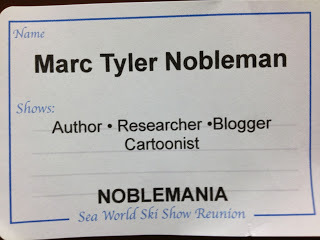
The two-day affair (of which I was able to be present only the first day) was the second time in two weeks that my blog series had led to a real-world event. (This one, however, was the first that I attended.)
I went down just for the night so I traveled light. That’s a genteel way of saying I didn’t bring a change of shirt or pants. Or an umbrella. Which is foreshadowing to this: it was pouring. So much for holding the cocktail kick-off outdoors, the most appropriate setting for such a reunion. My clothes got drenched in the mad dash from the parking lot to the Caribe Royale lobby; luckily, they dried before the party.
But we didn’t need to watch a Florida sunset to make this party glow. And my welcome was Florida warm:
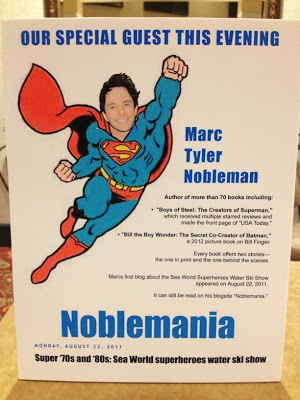
The turnout was stellar; I would say no fewer than 150. I thoroughly enjoyed watching old friends bear hug, laugh heartily, go back in time. Many recognized me and came up to thank me for inspiring the reunion. I said they inspired me, so if anything, they inspired their own reunion.
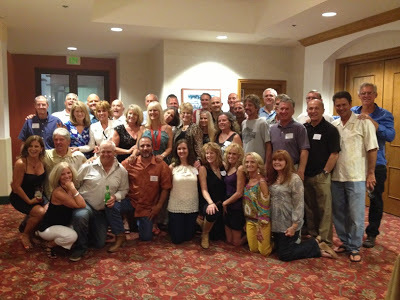 superheroes reunited
superheroes reunited
Randy Messer, one of the skiers who had been particularly forthcoming and generous, thoughtfully brought a copy of Bill the Boy Wonder: The Secret Co-Creator of Batman, so I signed a Batman book to Green Lantern (the character I most associate with Randy—and a character also first written by Bill Finger). Other skiers asked if I brought copies to sell (which I never would have done though I was flattered that they asked).
Diane Smith, one of the few skiers I’d met prior to the reunion, brought something way cooler than my book—her original Sea World nametag:
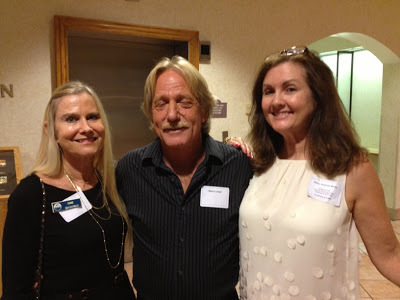 Diane Smith, Kerry Lloyd, Betsy Maher
Diane Smith, Kerry Lloyd, Betsy Maher
Debbie Blake, Sherry Runion, John Macqueen, Woody Johnson, Wes Stone, Tom Ingram, and Donna Dewerdt Jarvie sweetly apologized to me for not responding or participating in the series. I understood. Some were dealing with personal issues, others thought I was a crackpot. Both legitimate reasons! (And Sherry, you did participate, just under the wire!)
A highlight of the evening was when Tom Weber took to the stage to welcome everyone. He reminisced eloquently and then began a story from the summer. It was hard to hear but I did make out my name. At that point, someone gently shoved me onto the empty dance floor. Tom gestured for me to come on stage, which I did.
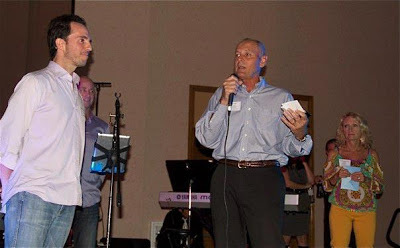
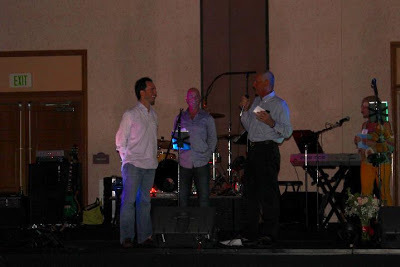
While driving and listening to the radio, Tom continued, he caught an NPR story about Batman and a writer named Bill Finger. Tom quickly realized that the guy telling that story was the same guy who had bugged him the year prior to answer a bunch of questions about the Sea World superheroes show.
Tom expressed gratitude on behalf of the group for my inadvertent role in getting the old gang back together. I was, yet again, touched.
I came observing bear hugs and I left receiving them. That’s a successful reunion. See everyone—and more—at the 34th?
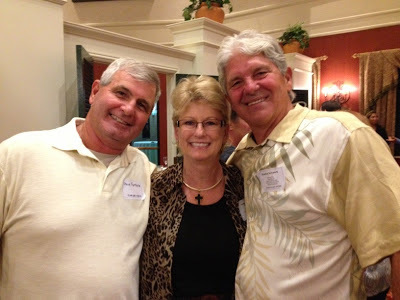 Steve Fontaine, Gay Schwartz, Sharkey Schwartz (no relation)
Steve Fontaine, Gay Schwartz, Sharkey Schwartz (no relation)
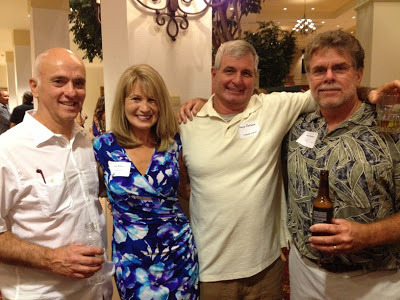 Dave Madeline, Sheri McNary, Steve Fontaine, Brad Whitmore
Dave Madeline, Sheri McNary, Steve Fontaine, Brad Whitmore
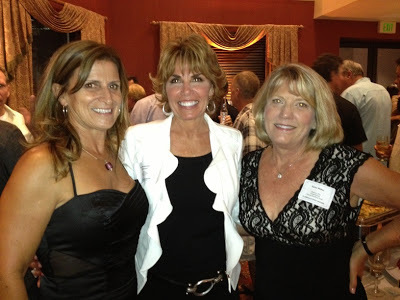 Mary McMurtrie, Kaci Whittenton, Karen Weber
Mary McMurtrie, Kaci Whittenton, Karen Weber
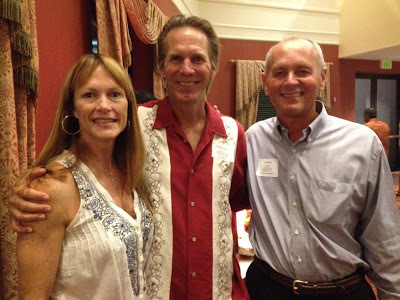 Lori, Doby Beusse, Tom Weber
Lori, Doby Beusse, Tom Weber
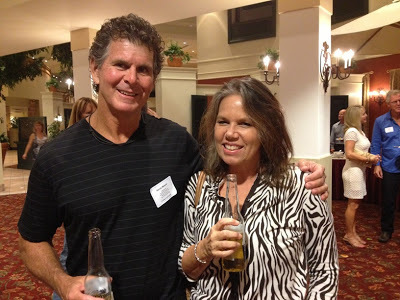 Randy Messer, Paula Nelson
Randy Messer, Paula Nelson
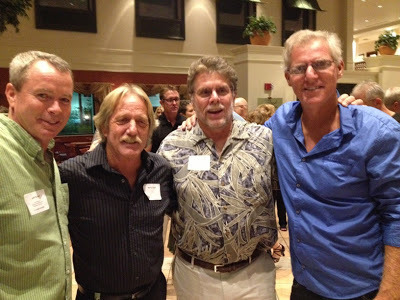 Jeff Parnell, Kerry Lloyd, Brad Whitmore, Andy Hansen
Jeff Parnell, Kerry Lloyd, Brad Whitmore, Andy Hansen
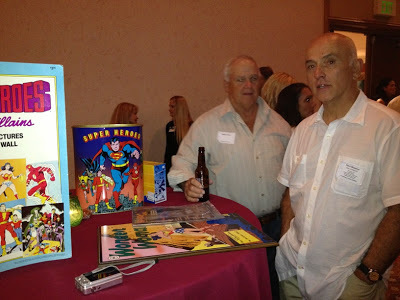 Bubby Snow, Dave Madeline with some of Diane Smith's superhero collectibles
Bubby Snow, Dave Madeline with some of Diane Smith's superhero collectibles
And look what I passed heading back to the airport...
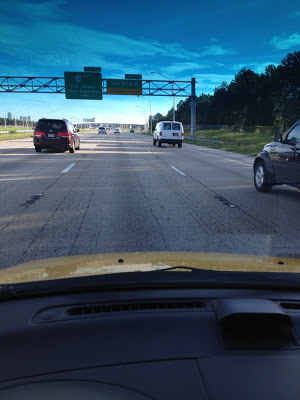
Actually, I went to Florida. But I went because of 1977.
I went to meet people who, in 1977, were water skiers in the groundbreaking superhero show at Sea World in Orlando (and Ohio).

And whom, in 2010 and 2011, I tracked down. After interviewing more than 40 of them, I posted an oral history of what some call the most accomplished water skiing show ever mounted.
During the ski show, most of them were teenagers or in their early twenties. Their recollections were entertaining and often moving, frequently unique (how many people you know got paid to water ski?) yet familiar to anyone who has had a summer job or a summer crush. Many had not stayed in touch with anyone else from the show, and through my series, some found themselves reconnecting. It wasn’t a surprise to me when talk of a reunion surfaced.
Thanks to the initiative and considerable efforts of former superheroine Betsy Maher and those she recruited, a reunion did indeed come into being, just over a year after the final entry in my series went live. The superhero show closed in 1979, making this the 33-year reunion…and making Betsy a superheroine still. As we all know, reunions are a lot of work to organize.
I was honored to be invited but hesitant to go. After all, I wasn’t in the show. I haven’t water skied since the mid-1980s, and when I did then, it wasn’t performance caliber. (In other words, I could barely keep upright.)
But I developed friendships from afar with these people, and some of them encouraged me to get over my hang-ups and show up.
So I took the plunge.

The two-day affair (of which I was able to be present only the first day) was the second time in two weeks that my blog series had led to a real-world event. (This one, however, was the first that I attended.)
I went down just for the night so I traveled light. That’s a genteel way of saying I didn’t bring a change of shirt or pants. Or an umbrella. Which is foreshadowing to this: it was pouring. So much for holding the cocktail kick-off outdoors, the most appropriate setting for such a reunion. My clothes got drenched in the mad dash from the parking lot to the Caribe Royale lobby; luckily, they dried before the party.
But we didn’t need to watch a Florida sunset to make this party glow. And my welcome was Florida warm:

The turnout was stellar; I would say no fewer than 150. I thoroughly enjoyed watching old friends bear hug, laugh heartily, go back in time. Many recognized me and came up to thank me for inspiring the reunion. I said they inspired me, so if anything, they inspired their own reunion.
 superheroes reunited
superheroes reunitedRandy Messer, one of the skiers who had been particularly forthcoming and generous, thoughtfully brought a copy of Bill the Boy Wonder: The Secret Co-Creator of Batman, so I signed a Batman book to Green Lantern (the character I most associate with Randy—and a character also first written by Bill Finger). Other skiers asked if I brought copies to sell (which I never would have done though I was flattered that they asked).
Diane Smith, one of the few skiers I’d met prior to the reunion, brought something way cooler than my book—her original Sea World nametag:
 Diane Smith, Kerry Lloyd, Betsy Maher
Diane Smith, Kerry Lloyd, Betsy MaherDebbie Blake, Sherry Runion, John Macqueen, Woody Johnson, Wes Stone, Tom Ingram, and Donna Dewerdt Jarvie sweetly apologized to me for not responding or participating in the series. I understood. Some were dealing with personal issues, others thought I was a crackpot. Both legitimate reasons! (And Sherry, you did participate, just under the wire!)
A highlight of the evening was when Tom Weber took to the stage to welcome everyone. He reminisced eloquently and then began a story from the summer. It was hard to hear but I did make out my name. At that point, someone gently shoved me onto the empty dance floor. Tom gestured for me to come on stage, which I did.


While driving and listening to the radio, Tom continued, he caught an NPR story about Batman and a writer named Bill Finger. Tom quickly realized that the guy telling that story was the same guy who had bugged him the year prior to answer a bunch of questions about the Sea World superheroes show.
Tom expressed gratitude on behalf of the group for my inadvertent role in getting the old gang back together. I was, yet again, touched.
I came observing bear hugs and I left receiving them. That’s a successful reunion. See everyone—and more—at the 34th?
 Steve Fontaine, Gay Schwartz, Sharkey Schwartz (no relation)
Steve Fontaine, Gay Schwartz, Sharkey Schwartz (no relation) Dave Madeline, Sheri McNary, Steve Fontaine, Brad Whitmore
Dave Madeline, Sheri McNary, Steve Fontaine, Brad Whitmore Mary McMurtrie, Kaci Whittenton, Karen Weber
Mary McMurtrie, Kaci Whittenton, Karen Weber Lori, Doby Beusse, Tom Weber
Lori, Doby Beusse, Tom Weber Randy Messer, Paula Nelson
Randy Messer, Paula Nelson Jeff Parnell, Kerry Lloyd, Brad Whitmore, Andy Hansen
Jeff Parnell, Kerry Lloyd, Brad Whitmore, Andy Hansen Bubby Snow, Dave Madeline with some of Diane Smith's superhero collectibles
Bubby Snow, Dave Madeline with some of Diane Smith's superhero collectiblesAnd look what I passed heading back to the airport...

Published on January 12, 2013 04:00
January 11, 2013
Captain Marvel meets his fans
On 9/22/12, the Paley Center for Media in Beverly Hills and the Warner Archive Collection hosted a screening of the 1979 TV special Legends of the Superheroes as part of the two-day Retro Action-Adventure-Thon.
LOTS is one of the cult classics I covered in my extensive “Super ‘70s and ‘80s” series.
A star of that show—and my series—was Garrett Craig, AKA Captain Marvel.
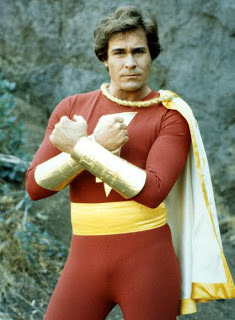 I was more than thrilled that Garrett was invited to participate in this rare public screening. He’d been out of the spotlight for decades and when I found him in early 2011, he did not know how fondly people remembered the show. He had never met any of his fans. (This is the third time I know of that someone interviewed for my series has then been asked to appear at a real-world event.)
I was more than thrilled that Garrett was invited to participate in this rare public screening. He’d been out of the spotlight for decades and when I found him in early 2011, he did not know how fondly people remembered the show. He had never met any of his fans. (This is the third time I know of that someone interviewed for my series has then been asked to appear at a real-world event.)
Garrett kindly allowed me to interview him again, this time about his Paley experience.
How did you find out about the event?
Nobody knows better than you, Marc, I am the Loch Ness Marvel of superheroes! You’re good…and it took you a year to find me. The Warner Archive team told me in the backstage green room that they had strategized getting me for the event, but who knew where Waldo was? Then my phone rang and it’s Richard F. Lee, my friend and Hollywood insider, asking if I knew about the premiere.
I tried calling anybody and everybody at Paley Media…and got [no] answer. Then, Marc, you email me. When you called the guys at Warner Archive for me—they said with only hours to go—they were shocked I was still alive!
If it weren’t for you and Richard…
Was this held in an auditorium?
It was in the John H. Mitchel Theater, inside the Paley Center. (That weekend they [also] had appearances by Patrick Duffy from Man from Atlantis, Ron Ely from Tarzan, and Michael Gray from Shazam.) The theater held about 100 people, all very enthusiastic fans!
Lightning struck one or two more times during the evening. By a perfect blessing, Patrick Duffy showed the episode that I had the privilege of working with him as the heavy. You knew I was a bad guy by the size of my mustache.
Matt Patterson and Daniel Ferranti of Team Warner introduced me to Michael Gray, [who played] Billy Batson on Shazam. A sincerely nice guy who very much values entertainment that holds to good family ideals and [features] role models for children.
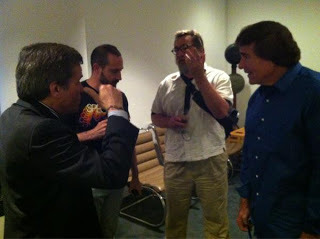 @WarnerArchive
@WarnerArchive
How were you introduced [to the audience]?
Mr. Rene, the very courteous liaison assigned to me, said my entrance was bland [even] by Ozzy Osbourne standards. Matt and Daniel are rockin’ the iPhones with their considerable talents, doing a streaming highlighting my Marvel history. Fans asking for autographs and pictures. Heads do a double take and the murmurs and pointing from fans with lightning bolts on their shirts become stronger.
“Tonight we have a special guest,” Matt said smiling, like he had been rehearsing all day and not for just the last four minutes! Matt hit LOTS history, secrets, and humor with rapid-fire precision. When he said, “Ladies and gentleman…Garrett Craig…your Captain Marvel,” I don’t think he knew that my intro would have the same kind of irreverent style and tempo.
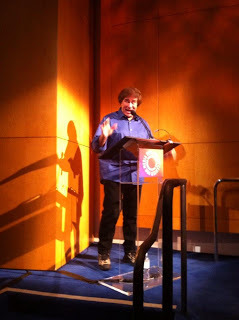 It was a surprise for the fans, right?
It was a surprise for the fans, right?
Actually, because you had called, Marc, they had announced the night before to the faithful that I would be there. Matt had read your interview with me, so he knew the circus was coming to town. [Marc smiles.]
The fans could not have been a more perfect audience. They knew all the characters so everyone was in on the jokes! When I told my first secret about Adam West, every iPhone [was] flaring [and] tweeting the secret nugget. Later, Matt and Daniel told me that they had been to over six of these LOTS premieres, and, in their opinion, the audience at this screening had the most fun because of the tone set. And they are hoping we can do it again…maybe with 10 minutes to prepare!
Did you meet and greet with fans after your stage appearance, or after the screening, or both?
Before, after, and during! These fans were absolutely amazing! When I entered the lobby, people slowly (so not to freak me!) started surrounding me. I just got off the elevator from 30 years ago and somehow they knew me? They had brought TV Guides, pictures from the net, pictures their kids had drawn. They wanted pictures, hugs, stories! It was my great pleasure to meet and learn a little bit about each of them and share stories from a more innocent time. Thank you, my friends, for all your kindness!
Had any, by chance, seen my interview with you?
Very definitely! It provided a lot of conversation openers about my questionable sanity and the LOTS actors/inmates I shared a prolonged recess with on set. When they asked how well I knew you, I of course, referred them to the X-rays and therapy notes I keep of your sessions with me.
In the green room (what’s done in the green room, stays in the green room!) the Paley Media personnel and Warner Archive team lit up like a Jumbotron when I mentioned your name. You understand, these people believe TMZ is written on stone tablets, the MGM library is the Tabernacle, and Dorothy’s shoes are the Holy Grail! They are all within six degrees of any media. They not only knew of you, they knew of your work. They knew Boys of Steel, offering, “Oh yeah! Front page, USA Today.” And the hot topic, Bill the Boy Wonder. A big bombshell, as you would imagine, at Warner Studios.
I thank you wholeheartedly, Marc, for finding me in the darkened celluloid of Hollywood history. I know you [want to find] the truth…for not just entertaining but also creating a message that inspires us to reach higher and treasure the uniqueness that is in each of us.
- end of interview -
That is most humbling, Garrett. I thank you again for being gracious enough to help me preserve something that clearly means more to more people than any of us may have realized.
LOTS is one of the cult classics I covered in my extensive “Super ‘70s and ‘80s” series.
A star of that show—and my series—was Garrett Craig, AKA Captain Marvel.
 I was more than thrilled that Garrett was invited to participate in this rare public screening. He’d been out of the spotlight for decades and when I found him in early 2011, he did not know how fondly people remembered the show. He had never met any of his fans. (This is the third time I know of that someone interviewed for my series has then been asked to appear at a real-world event.)
I was more than thrilled that Garrett was invited to participate in this rare public screening. He’d been out of the spotlight for decades and when I found him in early 2011, he did not know how fondly people remembered the show. He had never met any of his fans. (This is the third time I know of that someone interviewed for my series has then been asked to appear at a real-world event.)Garrett kindly allowed me to interview him again, this time about his Paley experience.
How did you find out about the event?
Nobody knows better than you, Marc, I am the Loch Ness Marvel of superheroes! You’re good…and it took you a year to find me. The Warner Archive team told me in the backstage green room that they had strategized getting me for the event, but who knew where Waldo was? Then my phone rang and it’s Richard F. Lee, my friend and Hollywood insider, asking if I knew about the premiere.
I tried calling anybody and everybody at Paley Media…and got [no] answer. Then, Marc, you email me. When you called the guys at Warner Archive for me—they said with only hours to go—they were shocked I was still alive!
If it weren’t for you and Richard…
Was this held in an auditorium?
It was in the John H. Mitchel Theater, inside the Paley Center. (That weekend they [also] had appearances by Patrick Duffy from Man from Atlantis, Ron Ely from Tarzan, and Michael Gray from Shazam.) The theater held about 100 people, all very enthusiastic fans!
Lightning struck one or two more times during the evening. By a perfect blessing, Patrick Duffy showed the episode that I had the privilege of working with him as the heavy. You knew I was a bad guy by the size of my mustache.
Matt Patterson and Daniel Ferranti of Team Warner introduced me to Michael Gray, [who played] Billy Batson on Shazam. A sincerely nice guy who very much values entertainment that holds to good family ideals and [features] role models for children.
 @WarnerArchive
@WarnerArchiveHow were you introduced [to the audience]?
Mr. Rene, the very courteous liaison assigned to me, said my entrance was bland [even] by Ozzy Osbourne standards. Matt and Daniel are rockin’ the iPhones with their considerable talents, doing a streaming highlighting my Marvel history. Fans asking for autographs and pictures. Heads do a double take and the murmurs and pointing from fans with lightning bolts on their shirts become stronger.
“Tonight we have a special guest,” Matt said smiling, like he had been rehearsing all day and not for just the last four minutes! Matt hit LOTS history, secrets, and humor with rapid-fire precision. When he said, “Ladies and gentleman…Garrett Craig…your Captain Marvel,” I don’t think he knew that my intro would have the same kind of irreverent style and tempo.
 It was a surprise for the fans, right?
It was a surprise for the fans, right?Actually, because you had called, Marc, they had announced the night before to the faithful that I would be there. Matt had read your interview with me, so he knew the circus was coming to town. [Marc smiles.]
The fans could not have been a more perfect audience. They knew all the characters so everyone was in on the jokes! When I told my first secret about Adam West, every iPhone [was] flaring [and] tweeting the secret nugget. Later, Matt and Daniel told me that they had been to over six of these LOTS premieres, and, in their opinion, the audience at this screening had the most fun because of the tone set. And they are hoping we can do it again…maybe with 10 minutes to prepare!
Did you meet and greet with fans after your stage appearance, or after the screening, or both?
Before, after, and during! These fans were absolutely amazing! When I entered the lobby, people slowly (so not to freak me!) started surrounding me. I just got off the elevator from 30 years ago and somehow they knew me? They had brought TV Guides, pictures from the net, pictures their kids had drawn. They wanted pictures, hugs, stories! It was my great pleasure to meet and learn a little bit about each of them and share stories from a more innocent time. Thank you, my friends, for all your kindness!
Had any, by chance, seen my interview with you?
Very definitely! It provided a lot of conversation openers about my questionable sanity and the LOTS actors/inmates I shared a prolonged recess with on set. When they asked how well I knew you, I of course, referred them to the X-rays and therapy notes I keep of your sessions with me.
In the green room (what’s done in the green room, stays in the green room!) the Paley Media personnel and Warner Archive team lit up like a Jumbotron when I mentioned your name. You understand, these people believe TMZ is written on stone tablets, the MGM library is the Tabernacle, and Dorothy’s shoes are the Holy Grail! They are all within six degrees of any media. They not only knew of you, they knew of your work. They knew Boys of Steel, offering, “Oh yeah! Front page, USA Today.” And the hot topic, Bill the Boy Wonder. A big bombshell, as you would imagine, at Warner Studios.
I thank you wholeheartedly, Marc, for finding me in the darkened celluloid of Hollywood history. I know you [want to find] the truth…for not just entertaining but also creating a message that inspires us to reach higher and treasure the uniqueness that is in each of us.
- end of interview -
That is most humbling, Garrett. I thank you again for being gracious enough to help me preserve something that clearly means more to more people than any of us may have realized.
Published on January 11, 2013 04:00
January 10, 2013
“Another fine book” - Comic Book Resources on "Bill the Boy Wonder"
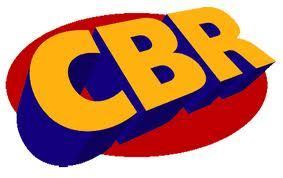 The Robot 6 column at Comic Book Resources covered Bill the Boy Wonder: The Secret Co-Creator of Batman, calling the author’s note “excellent” and, after mentioning Boys of Steel: The Creators of Superman, describing Bill the Boy Wonder as “another fine book.”
The Robot 6 column at Comic Book Resources covered Bill the Boy Wonder: The Secret Co-Creator of Batman, calling the author’s note “excellent” and, after mentioning Boys of Steel: The Creators of Superman, describing Bill the Boy Wonder as “another fine book.”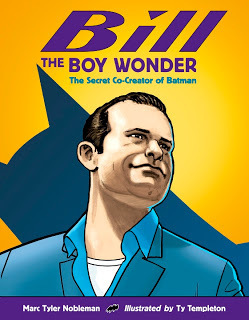
The (uncredited) author of the article astutely observes that the story is more complicated—and therefore harder to present in picture-book form—than Boys of Steel.
However, the two lines that had the biggest impact on me were these:
“Nobleman and [illustrator Ty] Templeton have made a pretty strong, bold and persuasive argument that Finger deserves [credit].”
And the closing line, one of the funniest I’ve seen with respect to Bill the Boy Wonder:
“If you’ll excuse me, I think I better go get to work on The First Man on Paradise Island: Dr. William Moulton Marston and the Creation of Wonder Woman before Nobleman beats me to it…”
Published on January 10, 2013 04:00
January 9, 2013
That's not Beethoven
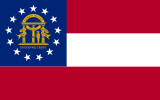
On 1/7/13, I kicked off the new year of author visits with the lovely Jane Macon Middle School in Brunswick, GA. (That’s a fly-into-Jacksonville-not-Atlanta destination.)
While there, the band teacher, Mr. Clark, treated me to a story showing how kids can partake in an adult sense of humor without crossing boundaries—and how, if mutual respect has been established, teachers can openly appreciate this.
To wit, Mr. Clark told me how he had told students a story from his college days. He’d been in the band himself, and his band teacher at the time was a mean man.
Before a concert, some of Mr. Clark’s classmates had hidden a surprise among the band teacher’s sheet music—a centerfold.
During the concert, when the band teacher discovered the centerfold, the surprise didn’t end there. Somehow the centerfold fluttered off his music stand and landed…in the live audience.
Mr. Clark’s students did not merely laugh at this story; they recreated it with Mr. Clark himself. But they had the good sense not to go full monty with their surprise. Plus the way they labeled it was both informed and cheeky—so much so that Mr. Clark hung it up in the band room to perpetuate the legends of two generations.
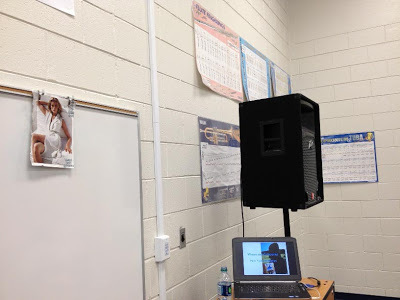
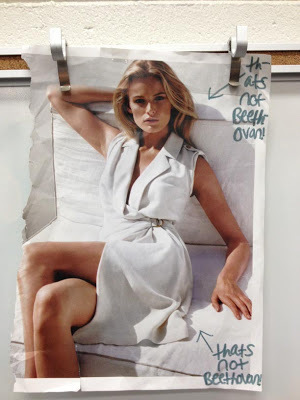
Thank you, Jane Macon, for a funnily unpredictable visit.
Published on January 09, 2013 04:00
January 8, 2013
Bob Kane’s niece
NPR’s All Things Considered interviewed me about Bill the Boy Wonder: The Secret Co-Creator of Batman.
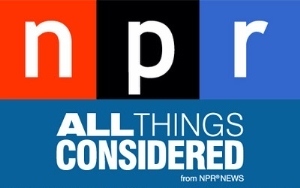
Prior to that, I had had no contact with Bob Kane’s family.
“What?” you are probably wondering. “You didn’t consult anyone from the family of one of the main characters of your book?”
That’s just it—Kane is not one of the main characters in the book. In fact, he barely appears. It is Bill’s story. Batman, to a large degree, is Bill’s story. Creatively, Bob was almost completely irrelevant to what makes Batman endure. (He did not write a single Batman story.)
Combine my fact-driven interpretation of Bob’s role in Batman with the massive reach of NPR and it’s no surprise that it was at this point when I first heard (indirectly—and unofficially) from the Kane family.
Bonnie Rosenzweig, who identified herself as Bob’s niece, posted a comment under the NPR segment:
Truth be told, I was happy to hear from Bonnie. My response:
Meanwhile, my response to an unrelated comment by someone else included this statement:
Bonnie’s response to that:
MTN:
A few more points worth rebutting:
BR: Bill was not the inspiration for Batman or for the original artwork.
MTN: I did not say he was. But Bob’s original artwork was discarded in favor of Bill’s costume design.
BR: I grew up with him and know almost everything about him.
MTN: Insofar as what Bob told you. I wasn’t the first to point out the pattern of dishonesty in Bob; it stands to reason he would have maintained the charade for his family, too. The stakes were too high.
BR: Bob Kane was the originator and was working at DC when he created Batman. He met Bill Finger after he already created and illustrated the character.
MTN: Bob originated something, but by his own admission, it was not the version that was published. And he did not meet Bill after he had created the character. (Again, see Batman and Me, page 41.)
Bears repeating: If I want to sell books I need to tell the truth.
Batman is a fictional character.
So is Bob Kane.

Prior to that, I had had no contact with Bob Kane’s family.
“What?” you are probably wondering. “You didn’t consult anyone from the family of one of the main characters of your book?”
That’s just it—Kane is not one of the main characters in the book. In fact, he barely appears. It is Bill’s story. Batman, to a large degree, is Bill’s story. Creatively, Bob was almost completely irrelevant to what makes Batman endure. (He did not write a single Batman story.)
Combine my fact-driven interpretation of Bob’s role in Batman with the massive reach of NPR and it’s no surprise that it was at this point when I first heard (indirectly—and unofficially) from the Kane family.
Bonnie Rosenzweig, who identified herself as Bob’s niece, posted a comment under the NPR segment:
I would like to know where Marc Tyler Nobleman is getting his facts from. Having grown up with Bob Kane, as his niece, I can attest to the fact that he indeed was the soul [sic] creator and the original artist behind Batman. Bill Finger was a personal friend, and they collaborated as friends, however Bill was not the inspiration for Batman or for the original artwork.
Truth be told, I was happy to hear from Bonnie. My response:
The book includes an extensive list of works cited (the even fuller version will be posting to the book’s site) this includes your uncle’s 1989 autobiography Batman and Me, in which he admits that Bill designed Batman’s costume. Several other DC Comics publications say the same.
Meanwhile, my response to an unrelated comment by someone else included this statement:
Kane was a perpetual liar according to most everyone I talked to who knew him; he contradicted himself even within his own autobiography.
Bonnie’s response to that:
Marc Tyler Nobleman, shame on you for calling Bob Kane a liar. Did you personally know the man. I grew up with him and know almost everything about him. My brother is even named after Bruce Wayne. I have reread my copy of his autobiography to check your references to the book. In my opinion, and with my personal knowledge of Bob Kane you have glorified Bill Fingers involvement, giving him credit for creating Batman is just not true. Some of what you say is correct as far as their collaborative efforts. What is not true is the sequence of events. Bob Kane was the originator and was working at DC when he created Batman. He met Bill Finger after he already created and illustrated the character. Bob was an amazing artist and had an incredible imagination. My guess is your putting out there a lot of sensational misinformation in order to sell your book. People just need to read Batman & Me to be better informed. At least it is coming from the source, and not a third parties interpretation. [all sic]
MTN:
You are right: I did not know Bob personally. I am talking only about his professional dealings with Bill. And since neither you nor I was there, we both have to rely on the accounts of Bill and Bob, to a lesser extent, those who knew them then.
I also encourage anyone to read Batman and Me. It verifies many of my points. In fact, in the book, Bob contradicts himself. On p. 36, Bob shows drawings allegedly made in 1934 of the Batman we know today. But on p. 41, he gives Bill credit for suggesting Batman’s cowl, scalloped cape, dark color scheme—essentially his whole costume—in 1939.
Further, in 1965, Bob (in so many words) called Bill a liar in a condescending letter reprinted here. However, some of what he wrote in ‘65 goes against what he wrote in ‘89. Again a contradiction.
Yes, Bob worked at DC before Bill. Yes, Bob came to Bill with a character sketch. But by Bob’s own admission, Bill overhauled Bob’s design and Bob presented that to DC. Bill wrote the first Batman story and hundreds more; Bob never wrote a Batman story.
If I want to sell books I need to tell the truth. Misinformation is (usually) a quick route to the end of a career.
A few more points worth rebutting:
BR: Bill was not the inspiration for Batman or for the original artwork.
MTN: I did not say he was. But Bob’s original artwork was discarded in favor of Bill’s costume design.
BR: I grew up with him and know almost everything about him.
MTN: Insofar as what Bob told you. I wasn’t the first to point out the pattern of dishonesty in Bob; it stands to reason he would have maintained the charade for his family, too. The stakes were too high.
BR: Bob Kane was the originator and was working at DC when he created Batman. He met Bill Finger after he already created and illustrated the character.
MTN: Bob originated something, but by his own admission, it was not the version that was published. And he did not meet Bill after he had created the character. (Again, see Batman and Me, page 41.)
Bears repeating: If I want to sell books I need to tell the truth.
Batman is a fictional character.
So is Bob Kane.
Published on January 08, 2013 04:00
January 7, 2013
The latest on my picture book “Thirty Minutes Over Oregon”
The quest continues for a publisher for my nonfiction picture book manuscript about a man who flies—but not with a cape. (As was typical for WWII pilots.)
What also continues: praise for that manuscript, called Thirty Minutes Over Oregon (which may be retitled Thirty Minutes Over America).
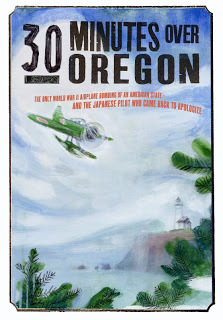 courtesy of Julia Sarcone-Roach
courtesy of Julia Sarcone-Roach
My determination to bring this story to a wide audience was already sky-high but comments like the following fuel it even more:
“It’s so, so cool, and so moving. In a way, it reminds me of the mega-bestseller Unbroken—but for picture-book readers!” — editor, major publisher
“It’s touching and speaks nicely about ideas of nationalism and patriotism (both here and abroad), and multiculturalism, all in a really interesting way.” — editor, another major publisher
“I am blown sideways, gobsmacked, dumbfounded. What an extraordinarily moving story. It simply must be told. I can’t believe it hasn’t been picked up—that is a travesty! And I love how Marc promotes/pitches it on his blog; why, it’s heroic! His passion for the story is palpable—contagious even. He is a gifted storyteller. This tale zigs, it zags and then…whoosh, it dives and hits!” — writer
“The best argument for continuing to write children’s nonfiction I’ve heard.” — Julie Winterbottom, former Nickelodeon Magazine editor
“The story about World War II, Thirty Minutes Over Oregon, has to be published. I am amazed that the story exists and we don’t know about it. That’s what I mean, his passion is contagious.” — Michelle Haseltine, middle school teacher
collected after my keynote at the Nevada Reading Week Conference (though Thirty Minutes Over Oregon took up maybe 5 or 6 minutes out of an hourlong presentation, it got more feedback than anything else I discussed):
“Very interesting—this is great history no one knows about. I hope it will be published soon.”
“I am interested in Thirty Minutes Over Oregon. Hopefully it will be published.”
“Want to read Thirty Minutes Over Oregon.”
“Especially poignant was the publishing process story of the Japanese [pilot] who bombed Oregon.”
“The Japanese bomber story was amazing.”
“Hope the Oregon book goes public.”
“Loved his story about Thirty Minutes Over Oregon and hope it gets published.”
“Interesting Oregon bombing story!”
“The sad story of a great story not yet finding a publisher.”
This was not specifically about Thirty Minutes Over Oregon but is relevant:
“I loved your book [Bill the Boy Wonder: The Secret Co-Creator of Batman], and your #nerdybookclub post. The more middle grade nonfiction picture books, the better.” — Adam Shaffer @MrShafferTMCE
Boys of Steel: The Creators of Superman is about persistence.
Bill the Boy Wonder: The Secret Co-Creator of Batman is about integrity.
Thirty Minutes Over Oregon is about redemption, and that’s a theme I can’t recall seeing in picture book nonfiction.
Will it take flight in 2013?
What also continues: praise for that manuscript, called Thirty Minutes Over Oregon (which may be retitled Thirty Minutes Over America).
 courtesy of Julia Sarcone-Roach
courtesy of Julia Sarcone-Roach My determination to bring this story to a wide audience was already sky-high but comments like the following fuel it even more:
“It’s so, so cool, and so moving. In a way, it reminds me of the mega-bestseller Unbroken—but for picture-book readers!” — editor, major publisher
“It’s touching and speaks nicely about ideas of nationalism and patriotism (both here and abroad), and multiculturalism, all in a really interesting way.” — editor, another major publisher
“I am blown sideways, gobsmacked, dumbfounded. What an extraordinarily moving story. It simply must be told. I can’t believe it hasn’t been picked up—that is a travesty! And I love how Marc promotes/pitches it on his blog; why, it’s heroic! His passion for the story is palpable—contagious even. He is a gifted storyteller. This tale zigs, it zags and then…whoosh, it dives and hits!” — writer
“The best argument for continuing to write children’s nonfiction I’ve heard.” — Julie Winterbottom, former Nickelodeon Magazine editor
“The story about World War II, Thirty Minutes Over Oregon, has to be published. I am amazed that the story exists and we don’t know about it. That’s what I mean, his passion is contagious.” — Michelle Haseltine, middle school teacher
collected after my keynote at the Nevada Reading Week Conference (though Thirty Minutes Over Oregon took up maybe 5 or 6 minutes out of an hourlong presentation, it got more feedback than anything else I discussed):
“Very interesting—this is great history no one knows about. I hope it will be published soon.”
“I am interested in Thirty Minutes Over Oregon. Hopefully it will be published.”
“Want to read Thirty Minutes Over Oregon.”
“Especially poignant was the publishing process story of the Japanese [pilot] who bombed Oregon.”
“The Japanese bomber story was amazing.”
“Hope the Oregon book goes public.”
“Loved his story about Thirty Minutes Over Oregon and hope it gets published.”
“Interesting Oregon bombing story!”
“The sad story of a great story not yet finding a publisher.”
This was not specifically about Thirty Minutes Over Oregon but is relevant:
“I loved your book [Bill the Boy Wonder: The Secret Co-Creator of Batman], and your #nerdybookclub post. The more middle grade nonfiction picture books, the better.” — Adam Shaffer @MrShafferTMCE
Boys of Steel: The Creators of Superman is about persistence.
Bill the Boy Wonder: The Secret Co-Creator of Batman is about integrity.
Thirty Minutes Over Oregon is about redemption, and that’s a theme I can’t recall seeing in picture book nonfiction.
Will it take flight in 2013?
Published on January 07, 2013 04:00
January 6, 2013
An aged author meets his fans for the first time
In 2011, I had a transformative experience as an author fan and as an author myself. I had the great fortune of helping to set up a surprise in which author Edward Ormondroyd, whose first book came out in 1957, met an audience of his fans for the first time in his career.
I have blogged about it in pieces and recently retold the story in one go at the site of the NPR radio show Snap Judgment.
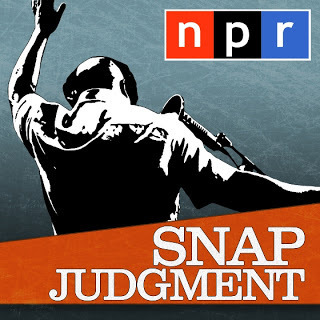
Please read (or revisit, as the case may be) the story and if moved by Edward discovering groupies in his golden years, please comment there (and here, of course). My involvement aside, it is a lovely story about a deserving man.
I have blogged about it in pieces and recently retold the story in one go at the site of the NPR radio show Snap Judgment.

Please read (or revisit, as the case may be) the story and if moved by Edward discovering groupies in his golden years, please comment there (and here, of course). My involvement aside, it is a lovely story about a deserving man.
Published on January 06, 2013 20:36
January 5, 2013
"Bethesda Magazine" 9-10/12
Published on January 05, 2013 04:00

